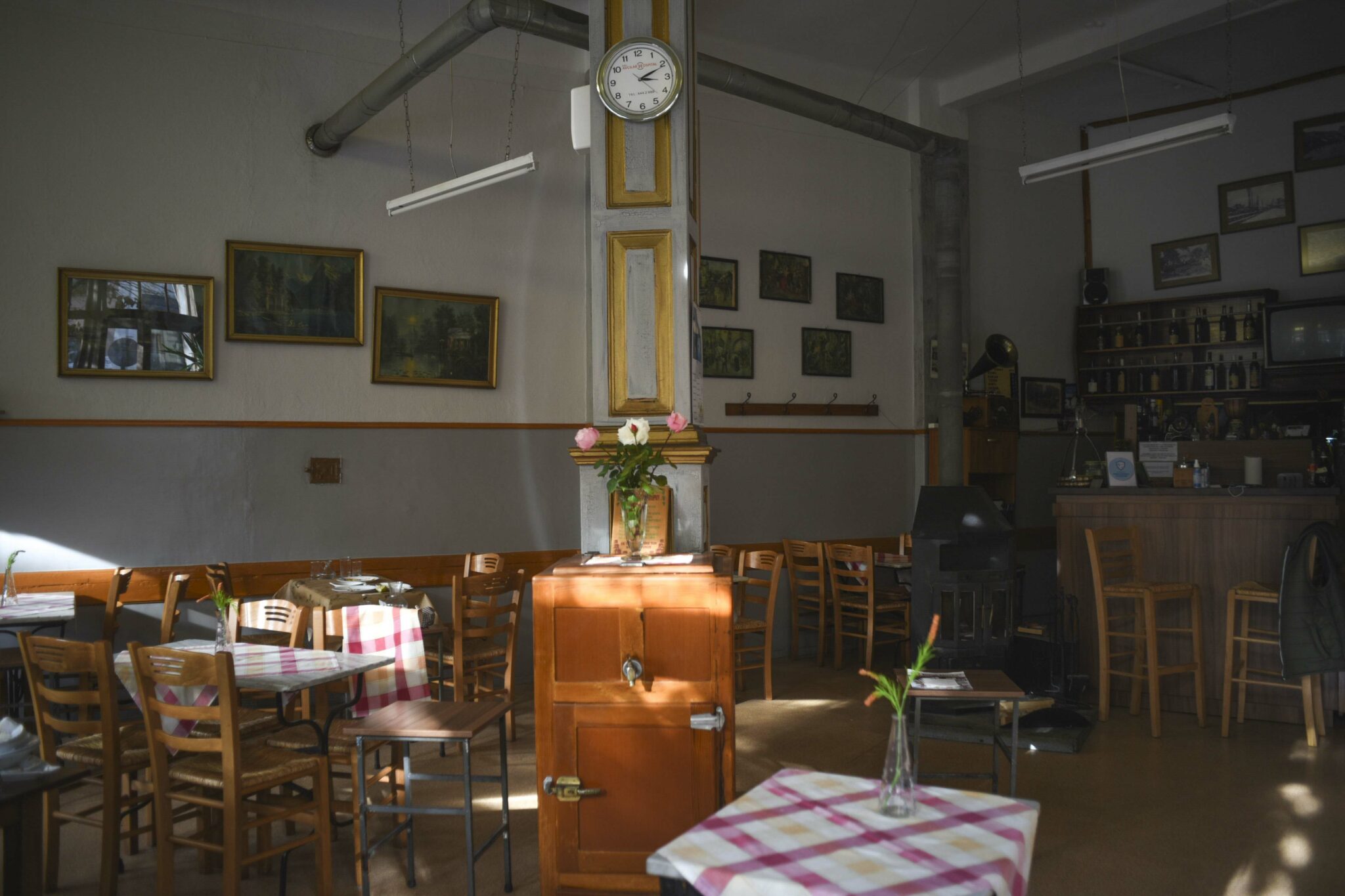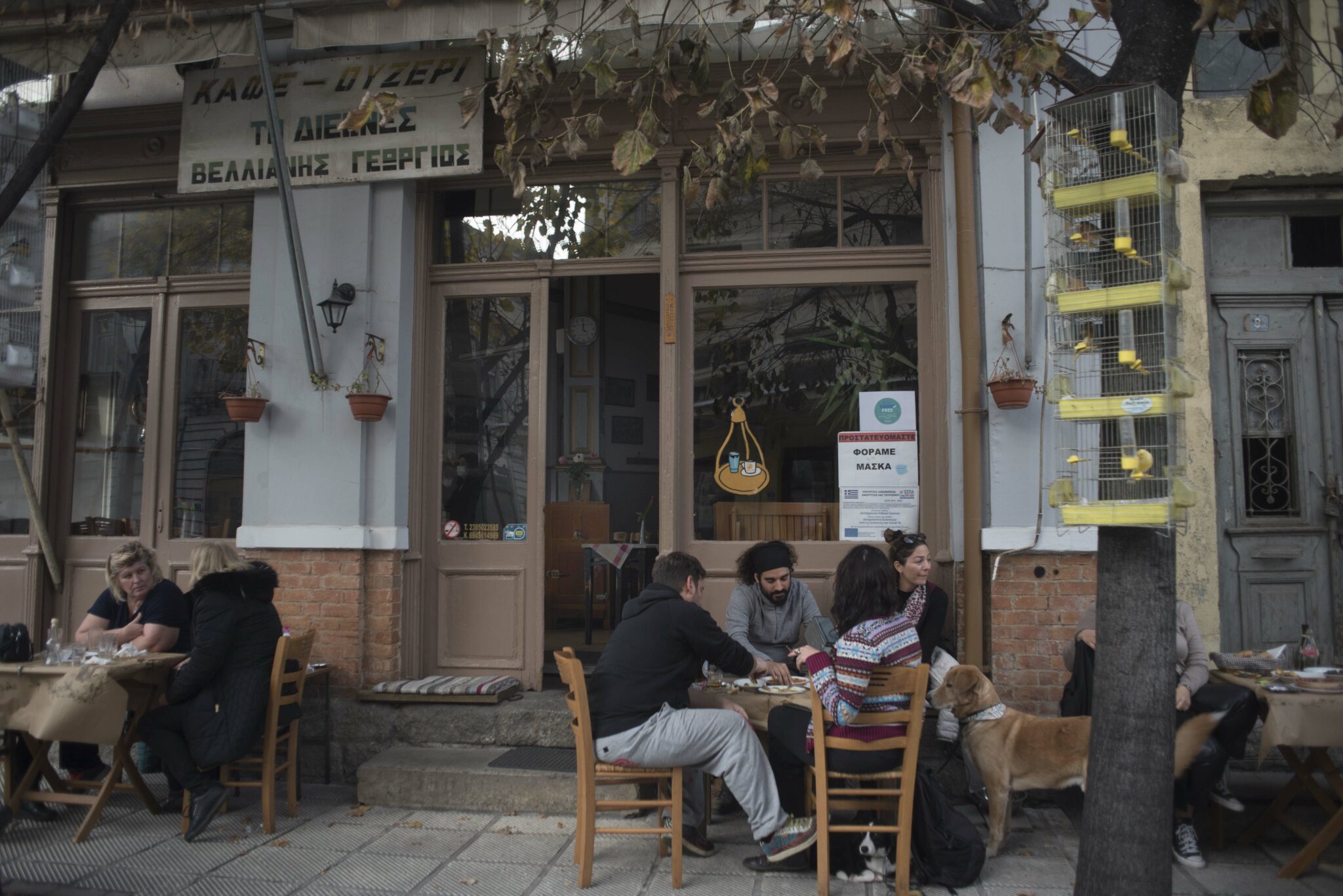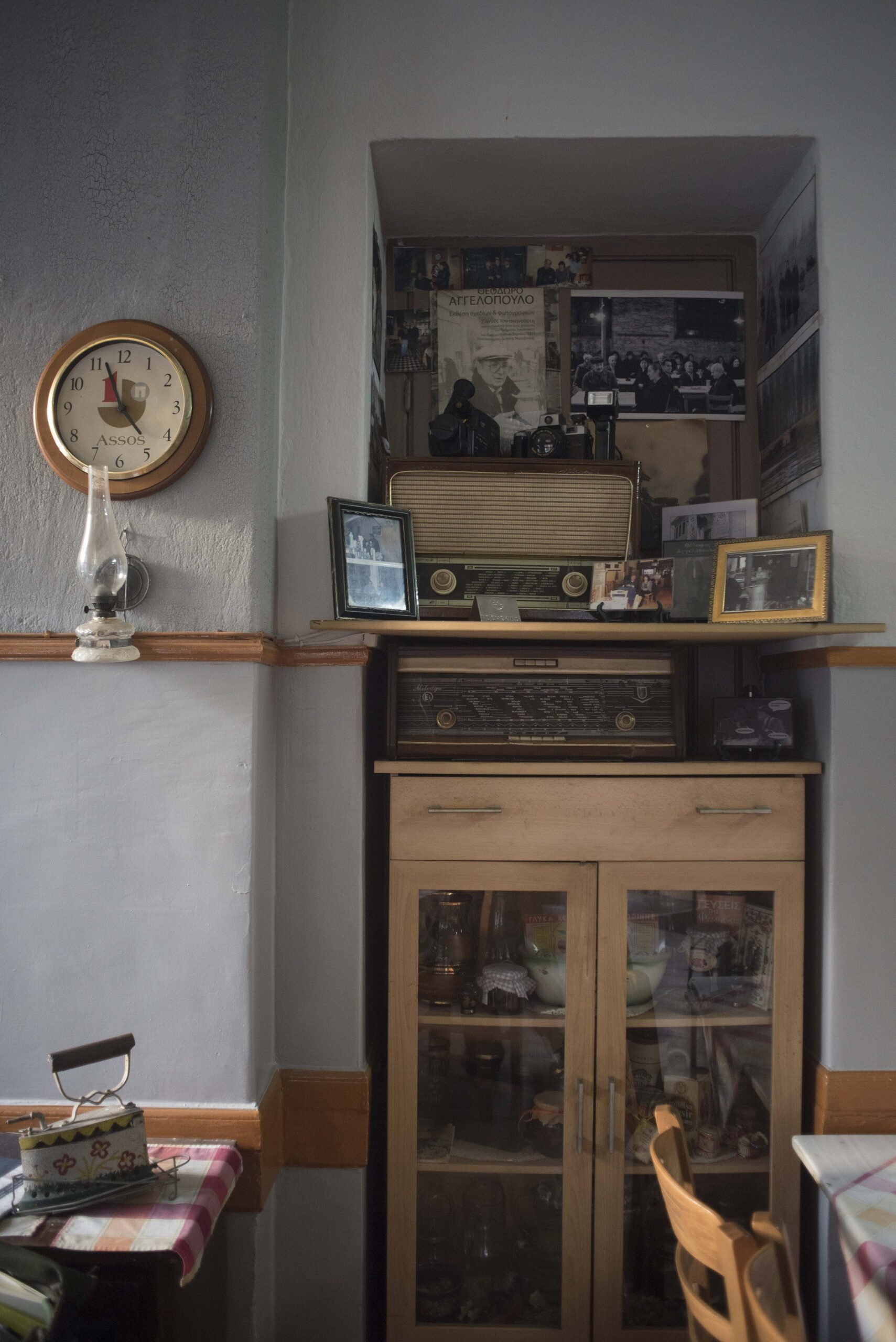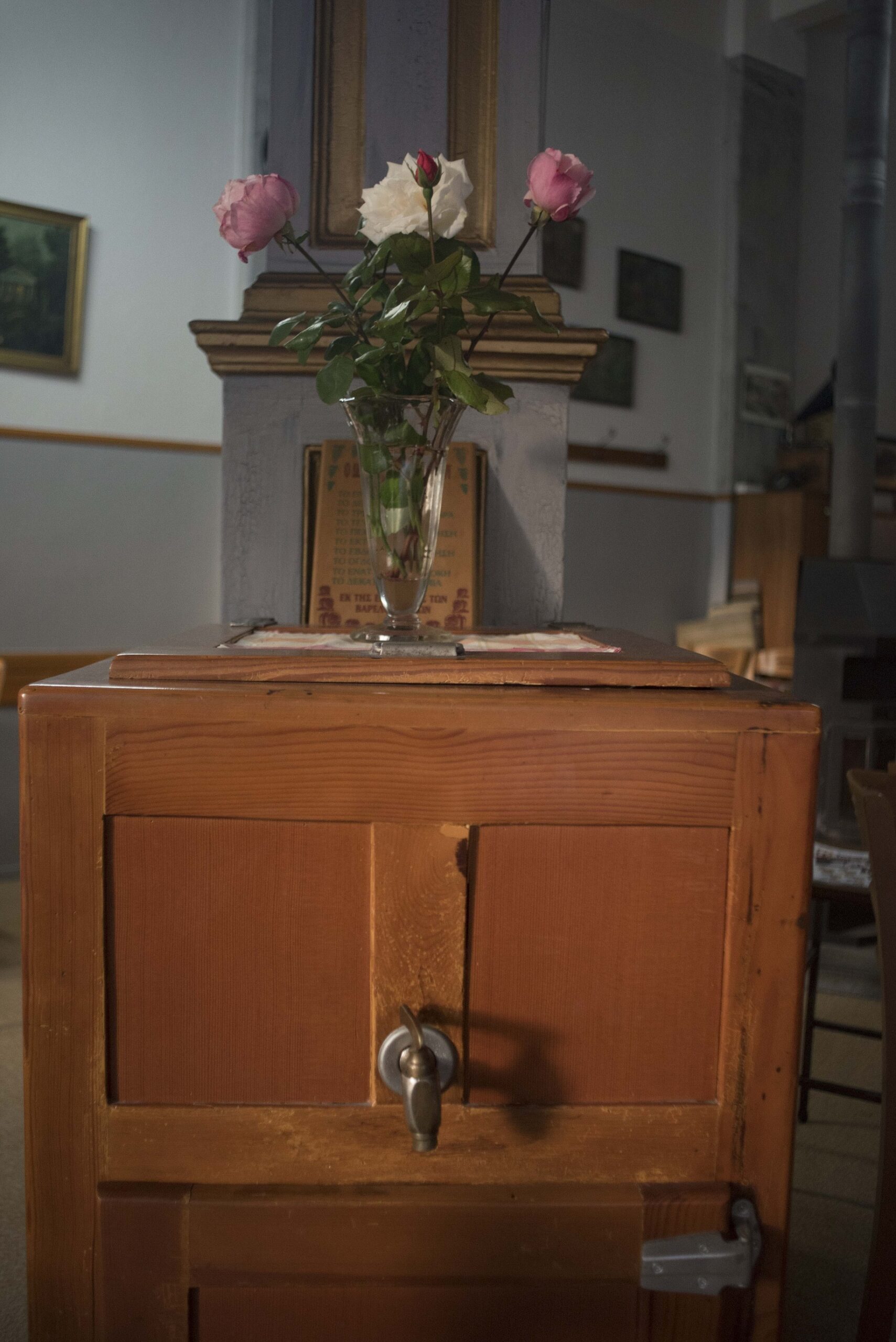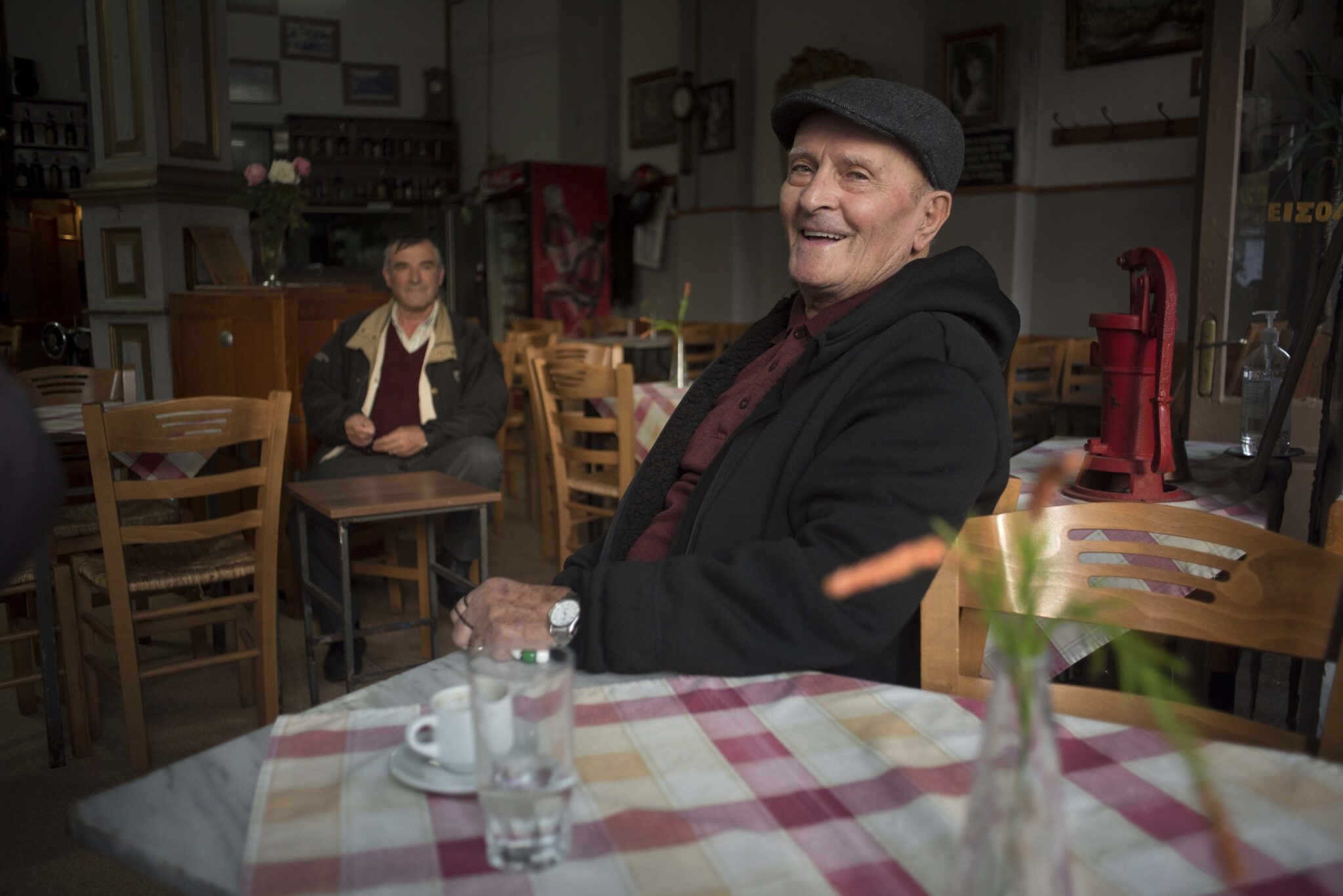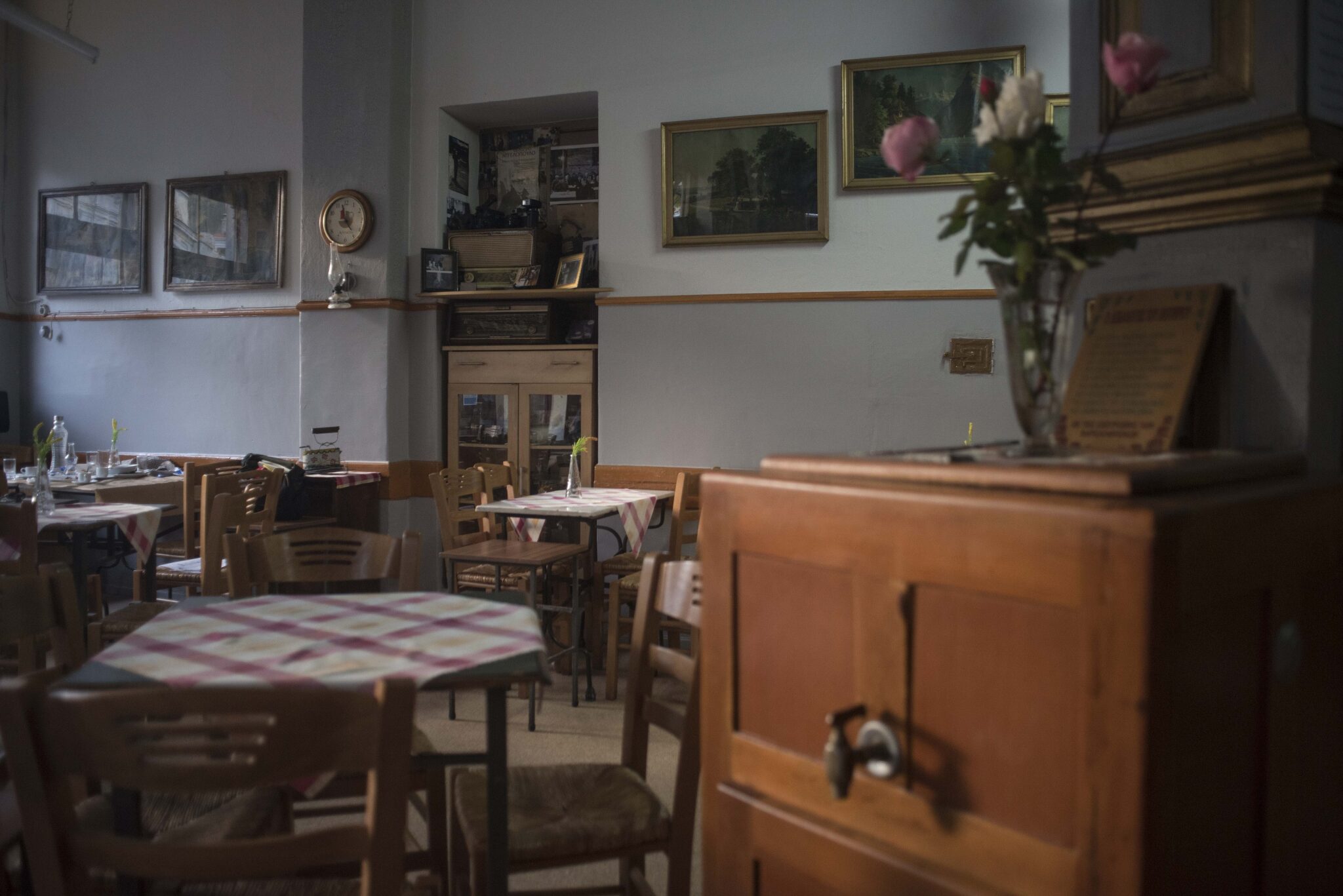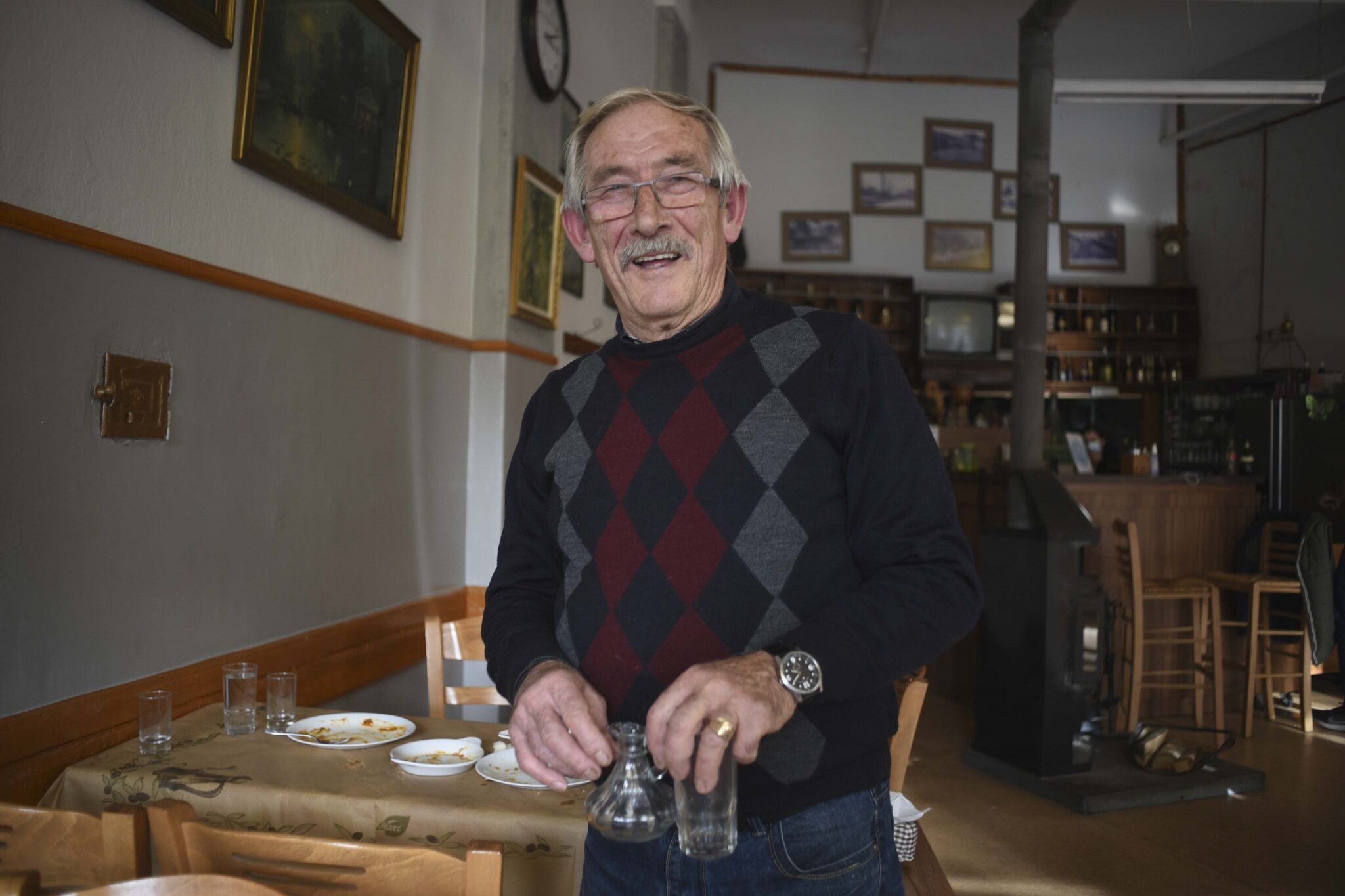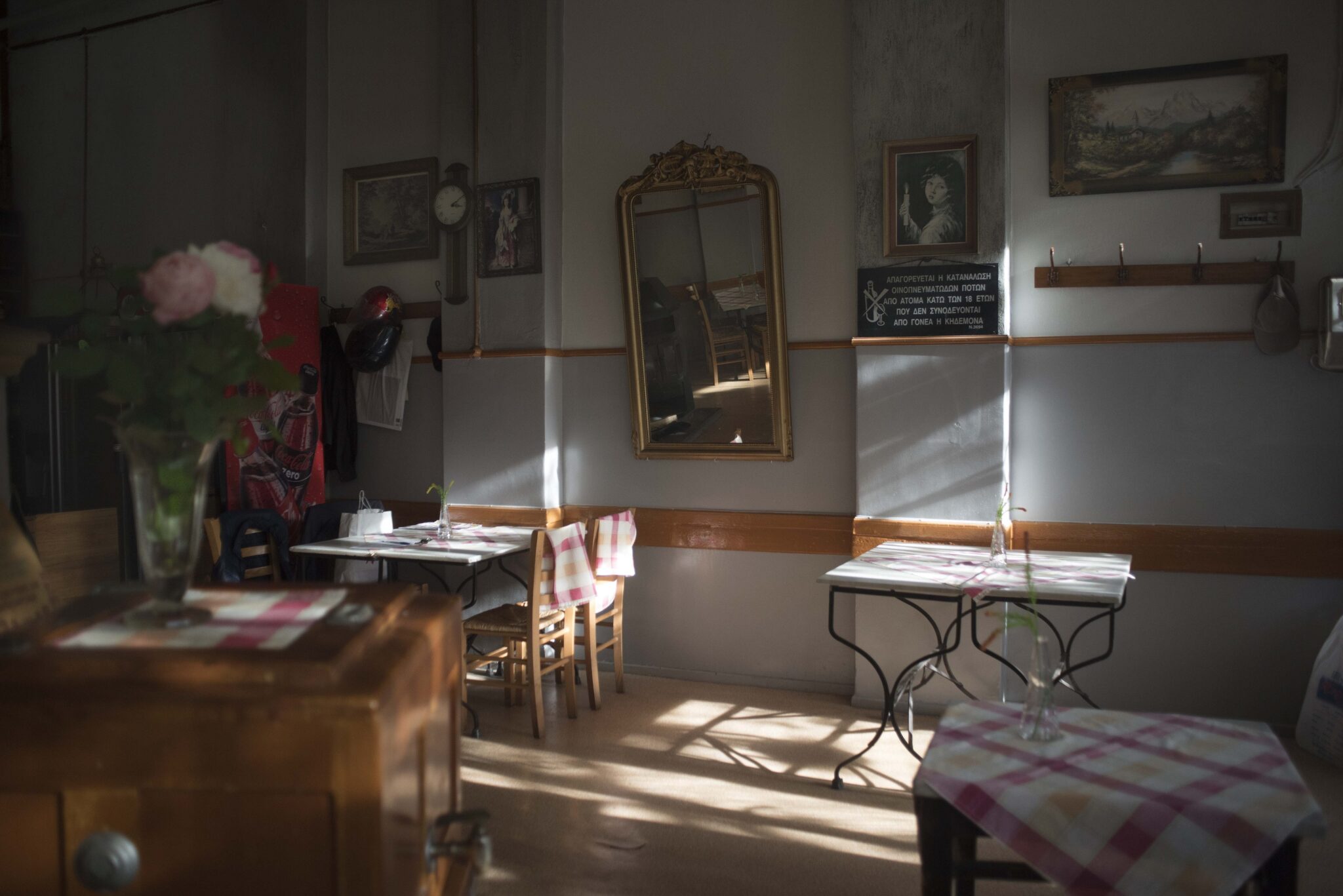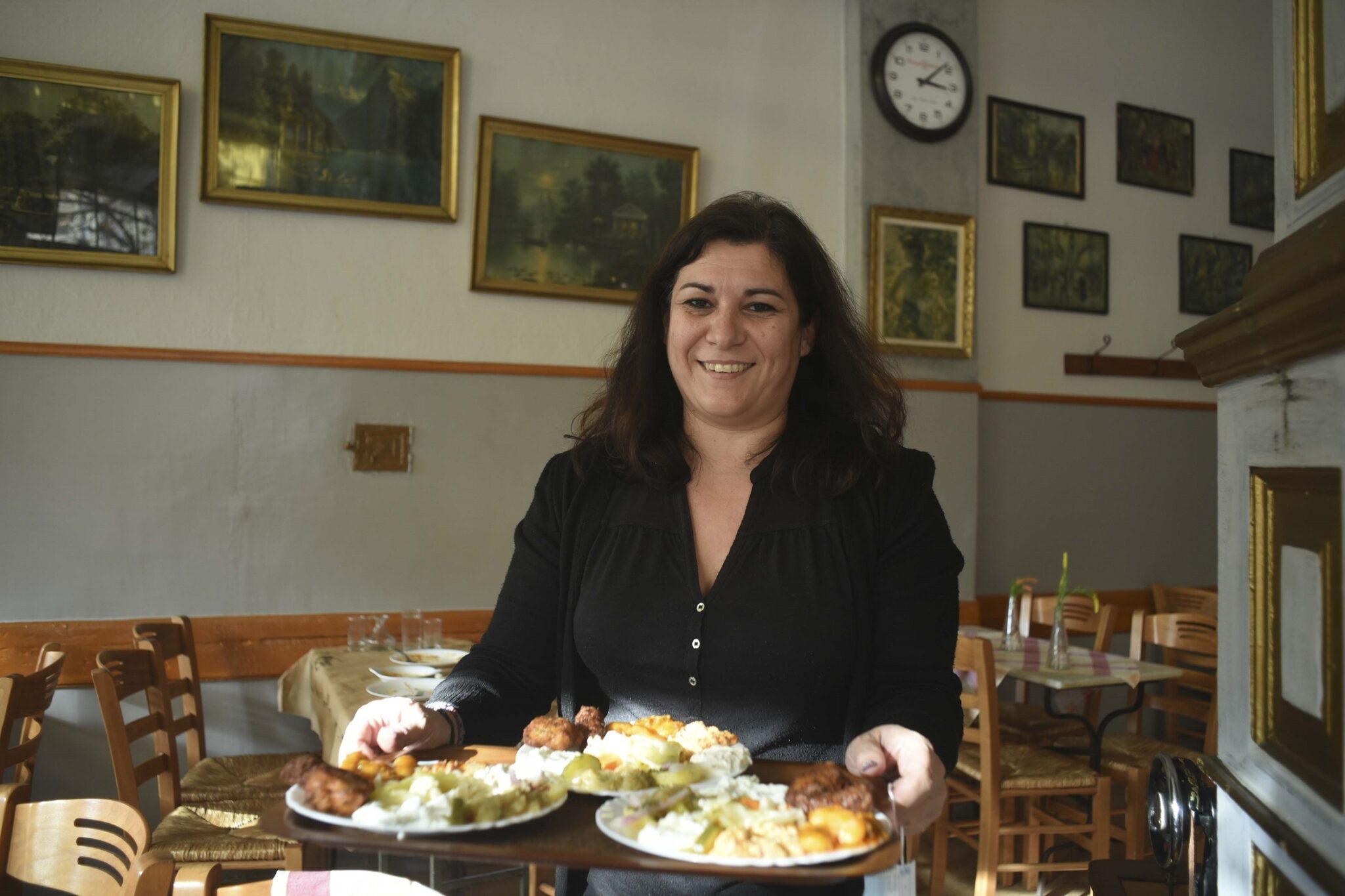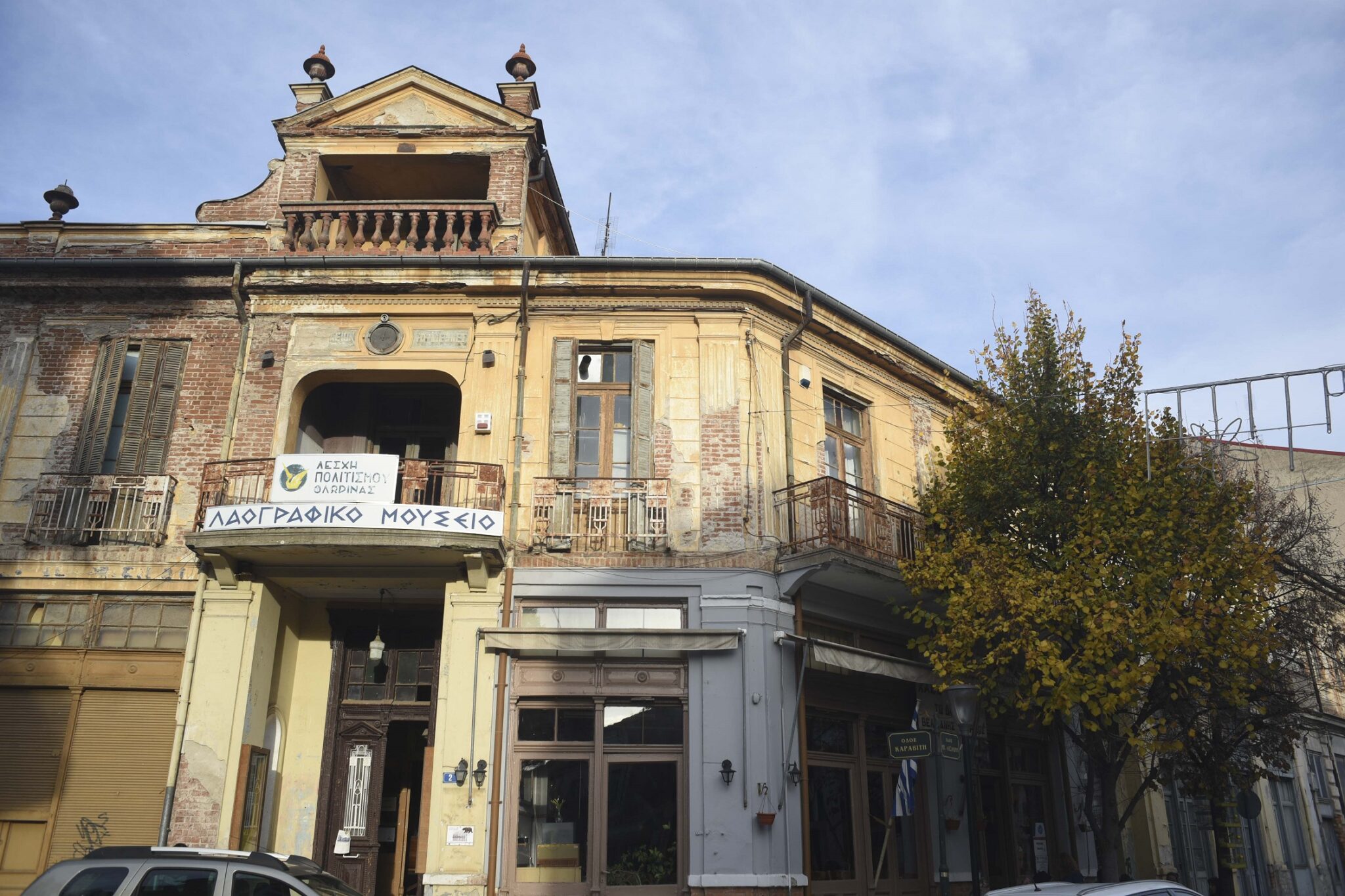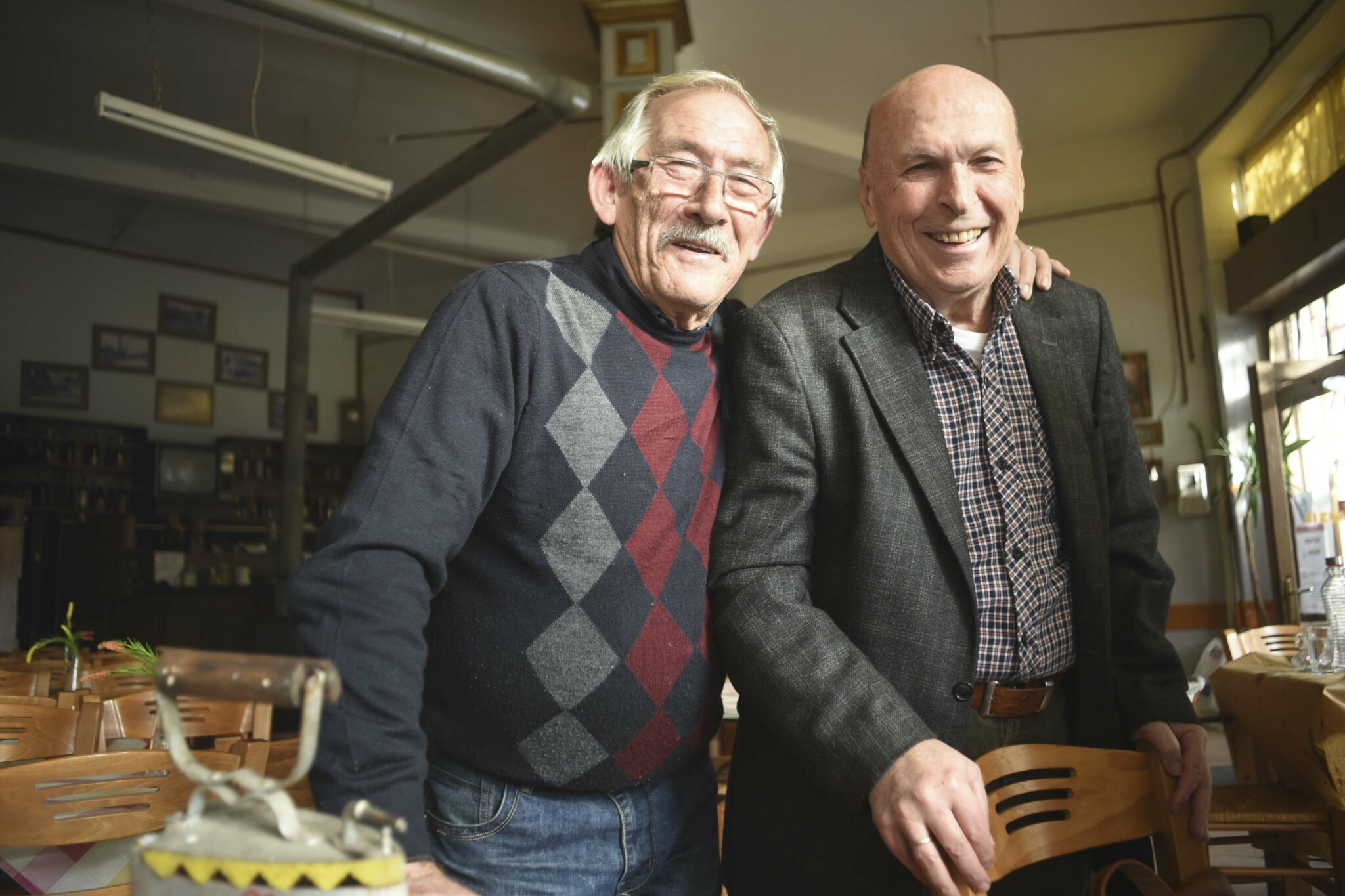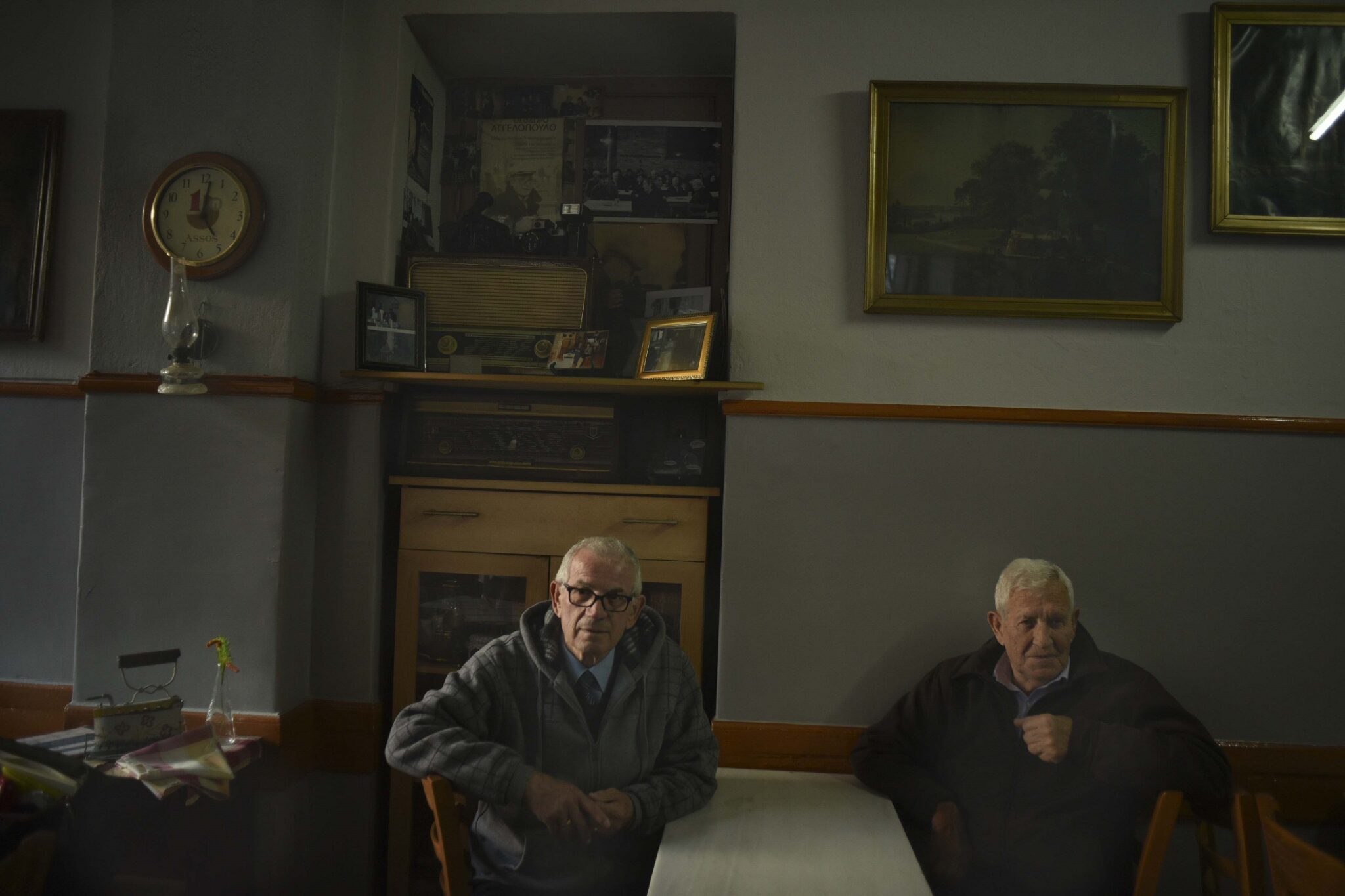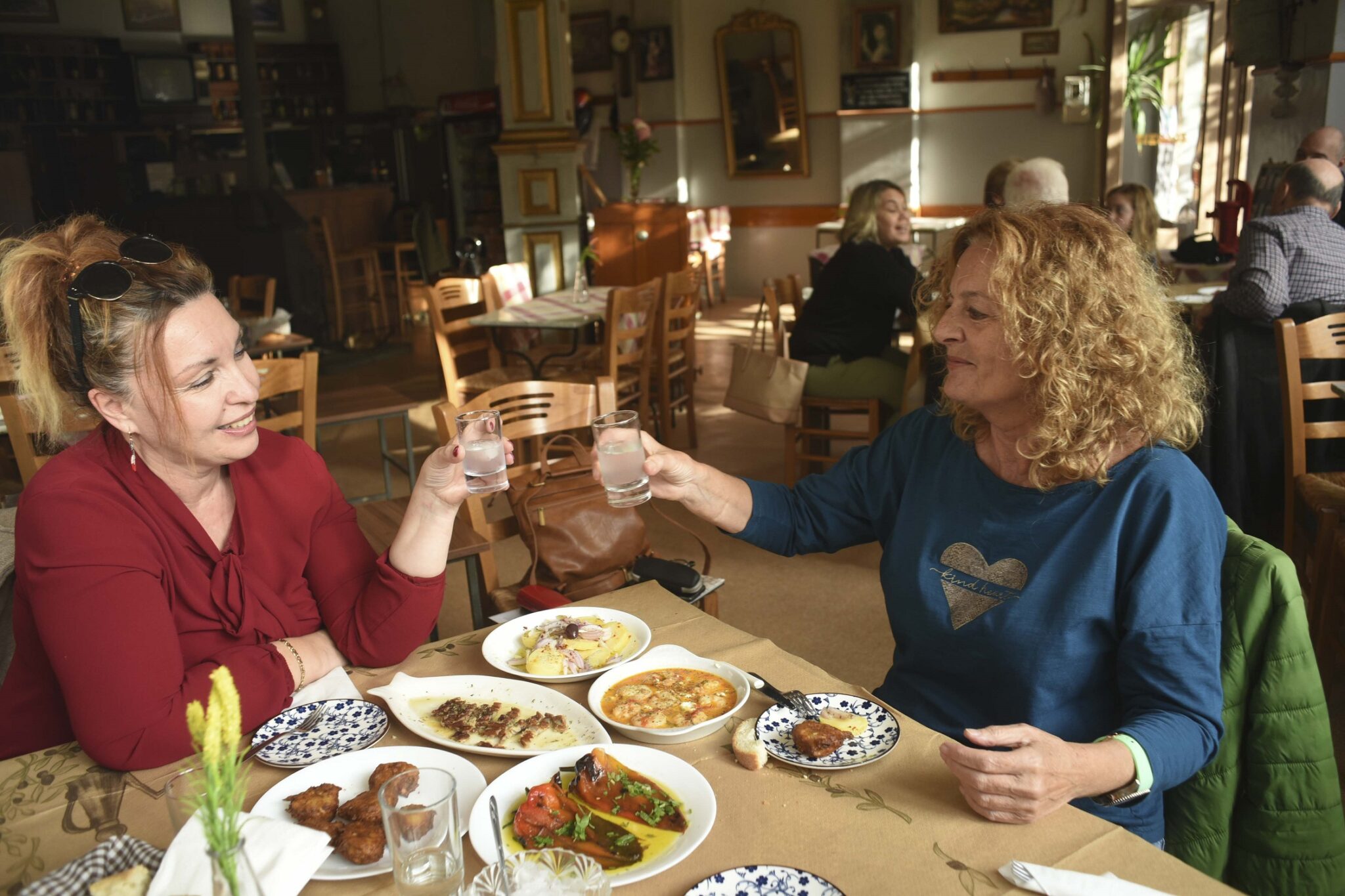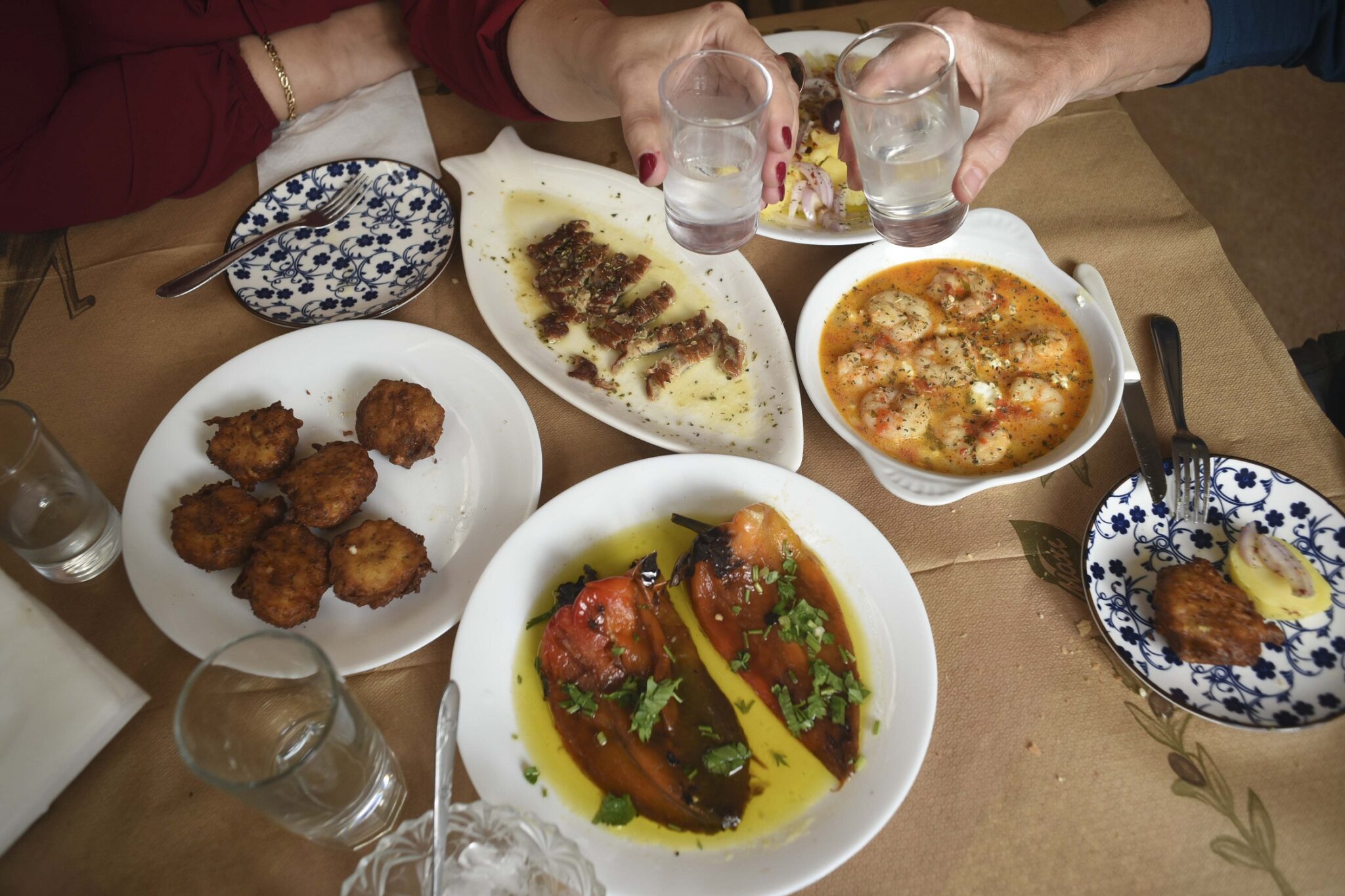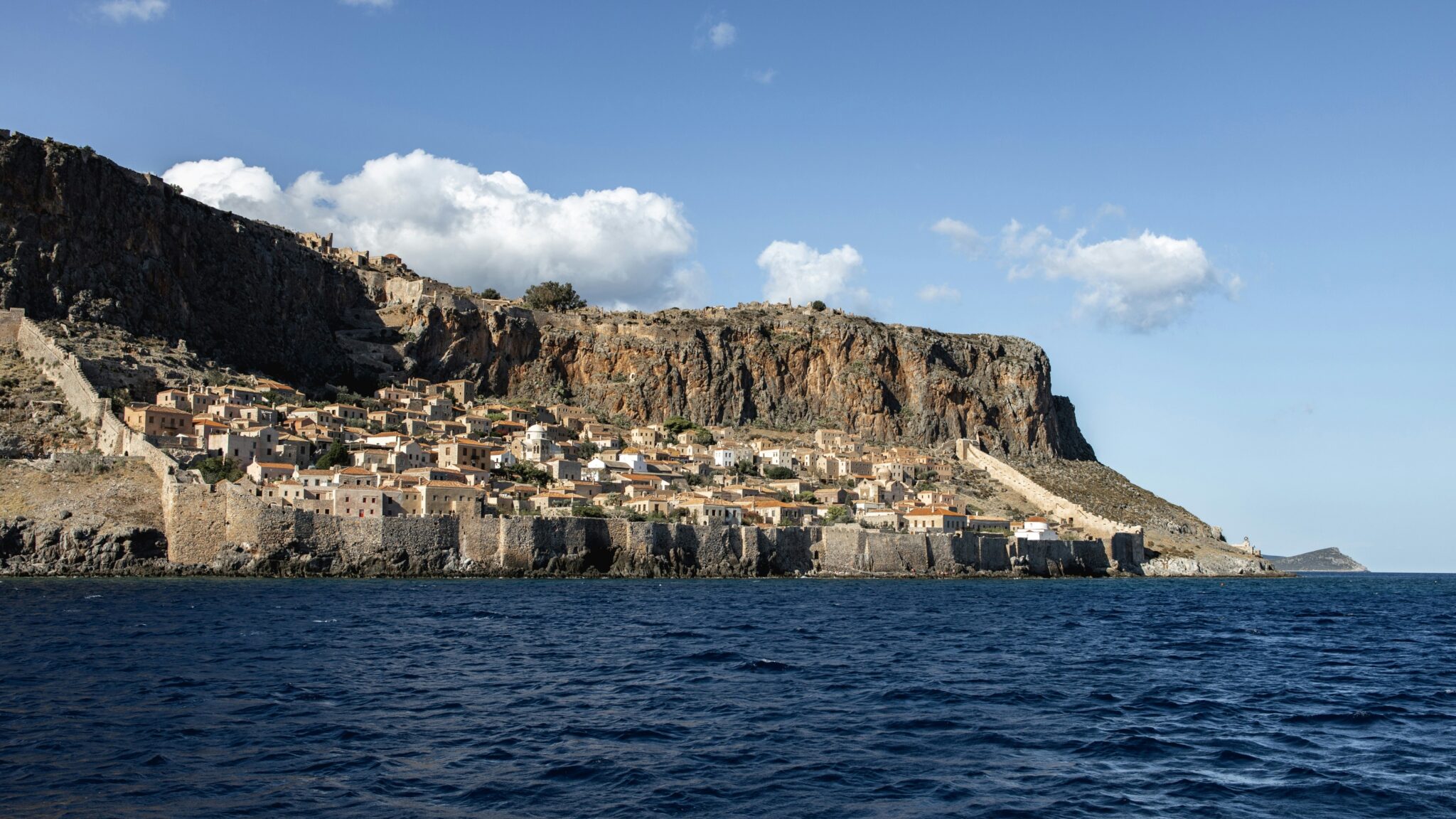It’s been ten years since the death of the poet of images, Theodoros Angelopoulos. A few days ago, in Gent, during the World Soundtrack Awards, composer Eleni Karaindrou was awarded with the Lifetime Achievement Award for her work.
As she said to Giannis Panagopoulos at Fragile.gr, “It was a night dedicated to Greek film score composers, and to a big part of my work. It was very touching to hear this music in Gent’s opera, that has a 1000 people capacity. We had a large press conference, we spoke about Theodoros (Angelopoulos), about Greece, about my homeland.”
So, it’s no accident that we are at his “second home”, as the beloved late director called “Diethnes”. I’m taking pictures while I listen, allowing the camera’s click to come from my feelings. Arts, Agriculture, Psychology and Education students from all over Greece, are enjoying tsipouro (traditional pomace raki) and meze from early in the day, under the trees sitting at the tables on the sidewalk.
Small, colourful, wooden cages are hanging from the trees with canaries singing in tune with the old folk music and the serenades coming from the speakers. This year, cold temperatures seem to be hesitant to arrive as can be seen by the red and yellow leaves still swirling on the sidewalks
“We are in an emblematic building, built between 1924-1925, by the brothers Georgios, Ioannis and Ilias Simos, who came from the neighbouring village Alona (Armensko), to house the “Hotel Diethnes”. The mid-war era resulted in some excellent buildings, and also created a somewhat bourgeois class in town. Georgios Simos had been the mayor of Florina, while the project was funded by Ioannis, who had migrated to the USA, and it was designed by civil engineer Aristotle Meletiou – graduate of the School of Arts of the National Technical University of Athens (1890) who also studied in Gent and Paris. According to Dimitris Mekasis*, before the hotel, there was a Turkish inn at the same location. The building permit came in 1925 and the project was completed in 1927, when the first add was published in the local press: “Newly-built European style hotel has just opened in our town”. There were three more inns in town, like the now abandoned building right across the street – from the 1924 hotel – that still maintains its past glory intact.
This is where travellers who needed to spend the night in Florina, on their way to Bosnia, Serbia, Albania, Yugoslavia later on, the South of Greece, Thessaloniki and the rest of West Macedonia, stayed. You see the mid-war era was a period of intense population, idea and architectural styles exchange, and all this influenced a town with a population of between eleven and twelve thousand people,” Dr Chrisoula Voskopoulou, architect and professor of Rhythmology and History of Architecture at the Department of Fine and Applied Arts of the University of Western Macedonia, tells us.
“Diethnes was the first hotel with hot water, a shared bathroom in each floor, and a suite with a balcony – that was right over the coffee shop. Today, the seven heirs allow the Cultural Club that offers photography, arts, chess, and dance lessons, to use the space, while the famous Film Club, celebrating its 30 years, is also based here. Without it we would have been poorer in the art of the very inspiring Angelopoulos. I still remember fondly the times we cut class with my schoolmates to go watch the shooting of his films, at “Diethnes” and the market. Until the 1980s we had two cinemas, “Olympion” and “Ellinis”.
“This is where Venizelos (prime minister of Greece) stayed during his second period in office. It was the most luxurious hotel, along with a few more on the main square, and at the coffee shop you could have great coffee prepared with care, and they served the hotel’s breakfast. It was named “Diethnes” (it means international) from the very beginning. It was a popular name at the time. It was built with great care, something that the fact that it still stands, intact, confirms. We want to organise a celebration for its 100-year anniversary. There were some efforts made, in the beginning of the 1990s, to assess its value so that the Ministry of Culture could buy it, but they fell through,” dear Chrisoula adds.
For the regular, Theodoros Angelopoulos
We’re sitting at the sunniest corner of the shop, looking through the windows at the laid-back movements of the cheerful passers-by. “This is where my beloved friend, Theodoros, would sit to have his cognac, the five-star Metaxa, and his coffee,” the owner, Giorgos Vellianis, tells us. And that’s how the conversation about Kyr-Thodoros starts, as the Florina red peppers, the saganaki and the courgette balls accompany the tsipouro. After all, we’re not driving today.
“He shot seven films here and I’ve watched them all. I still remember the first time we met,” Giorgos continues and tears up. “He came inside, had a coffee, and we got to know each other. That’s when he told me: ‘I’ll come here to shoot more films.’ And that’s what he did. The first was ‘Voyage to Cythera’, in 1984 with Manos Katrakis and Dora Volanaki. The ambulance was right here, waiting for Katrakis to give him oxygen after each take. Theodoros came back in 1986 for ‘The Beekeeper’, in 1988 for ‘Landscape in the mist’, in 1991 for ‘The Suspended Step of the Stork’, in 1995 for ‘Ulysses Gaze’, in 1998 for ‘Eternity and A Day’ and in 2004 for ‘The Weeping Meadow’. Many scenes were shot inside, outside, right in front, at the crossroads. We remember them fondly. Gian Maria Volonte, Marcello Mastroianni, Jeanne Moreau, Harvey Keitel, Athinodoros Prousalis, Vasia Panagopoulou and so many others. Theodoros could be trusted and he always compensated us. Mastroianni was a man of few words, and he would rest in a trailer outside the shop and the others inside. Angelopoulos, as well as the set and costume designer, Mikes Karapiperis, were simple cool guys. Keitel was the nicest, a dream of an actor. He would say ‘George, come here.’ ‘What do you want me?’ I’d ask and he’d laugh and say: ‘A whiskey! You got it?’, ‘I got it’, I’d say in a Canadian accent. We’d sit, drink and talk about life next to the burning wood stove. Here and in America. ‘It’s true, life and the climate are better here. You have fun! It’s your nature,’ he’d say.
When the shooting ended and they packed to leave, he came to say goodbye, he hugged me, and teared up. and told me ‘I’ve never met someone like you at this profession.’ Everyone had a ‘choir’ sandwich here, as we call our omelette, with cheese, tomato, black pepper, red pepper – sweet or spicy. They liked eating it between peasant bread. You see, I have eighty chickens making eggs at a farm, with ducks, rabbits and pigeons,” he tells us. “And one year when we cut the vasilopita (a traditional cake that people eat on the January first, and whoever gets the piece with a coin inside, is supposed to be lucky for the whole year), Kyr-Thodoros told me ‘This is my second home and I’m not leaving here.’”
About the events during the “Suspended Step of the Stork”
In December 1990 he was already an internationally distinguished director. He arrived in Florina with Marcello Mastroianni and Jeanne Moreau to film “The Suspended Step of the Stork”. In the script, that he wrote himself, a young journalist, during a story at the borders, discovers a town, the face of a former politician who has disappeared, and an icon. The small border town, that seems like the edge of the world, is called by the locals “the waiting room” because many immigrants from other countries, who crossed the borders illegally, live there, dreaming of leaving to make a life “elsewhere”. Jeanne Moreau says: “Angelopoulos’ script ‘breaks’ the borders and with everything that is happening in the villages here, it brings an explosion, a freedom for people to move freely. Borders are in peoples’ minds; we don’t see them here.”
That’s why the then Metropolitan Bishop of Florina Augoustinos Kantiotes was shaken, and when he heard about the scrip he asked for filming to stop before it even started. He had already demolished the cathedral of Agios Panteleimonas in Florina, in 1971, to build a new one, in the presence of the dictator Papadopoulos, while in 1972, with army vehicles made available to him by the authorities, he demolished the church of Amyntaio, as well as others in the region of Florina, as he claimed there was a danger of them collapsing. The residents remember the churches with the glorious frescoes and Slavic signs. Kantiotes threatened Angelopoulos and the film crew with excommunication and in the end fulfilled the threat. The congregants shouted: “Excommunicated! Excommunicated!” and Angelopoulos used the scene in his next film “Ulysses Gaze”. World-renowned directors Ingmar Bergman and Akira Kurosawa on the one hand, and the audience and the international Press on the other supported the director, the film was shot, and it went to Cannes.
The history of the coffee shop
The old wooden sign above the entrance says “Diethnes – Giorgos Vellianis”. “It’s been hanging there for forty years,” Giorgos tells us. “Until then, where do you think one would go to have a meze? I was a house painter. When I got off work I went to a grocery store to drink a tsipouro and have a boiled egg. Nothing else. In 1978, ’79 and ’80. I’d just returned in 1977 from Canada, where I had migrated for six years. I had a passion for meze with tsipouro. And when I saw that the working people needed a place to drink this sweet drinkable spirit and were going to grocery stores and to small coffee shops to have some wine, eat a bit of tzatziki and a bit of lettuce…that was it! I told my wife, who had a degree as a foreman and was planning to get a job in the public sector: “We should either work together or go back to Canada.” And she asked me: “Work together doing what?” I told her: “We should buy this coffee shop and turn it into a tsipouro tavern.” We were both born and raised in Florina, and we did it. And since then, we’ve been in the kitchen, cooking together. At noon we gathered crowds. We were the ones who started the tsipouro tavern that serves tsipouro with meze, and since then the breaths in town are scented with tsipouro. This wasn’t true before, even though Florina produced tsipouro. We make our own tsipouro every year in our own stills. The first meze we made with my wife was pikantiko (it means spicy in Greek), that is the politiki salad (spicy pickled cabbage salad), baked gigantes beans, tirokafteri (spicy feta spread), tzatziki, meatballs from Izmir, cod, tas kebab. Lately we’ve added a pork stew, gyros, smoked pancetta, and the other popular dishes. We make a kefalotyri saganaki that’s impossible to copy,” he says smiling humbly, and also proudly. “It’s the pan,” he says, sitting with his friends, that include Angelopoulos’ retired barber, Lazaros Grigoriadis.
Vicky and Damianos, Giorgos’ children serve abundance. The “various pickles” with tomato, cabbage and cauliflower, the stuffed Florina red pepper with cabbage, celery and carrot that is dipped in vinegar and then put on the plate, the stuffed aubergine with pepper and kasseri cheese, the courgette balls. And the stove is turned on.
“As years passed Thodoros came on trips with his daughters and always said: “I’ll come back, you know.” And he always did, until he didn’t. We mourned him. I feel grateful for him, both for promoting my shop, and for encouraging my passion for the shop,” Giorgos says. Sounds of plates come from the kitchen. “Thodoros’ wife was friends with my missus, and we remember she would ask for condensed milk. I have a scene in “Eternity and A Day” where I tell Bruno Ganz ‘I don’t think you can get a taxi, the road is terrible’, as I give him a glass of water. It was mid-winter and Florina was covered in white,” Giorgos tells us tirelessly.
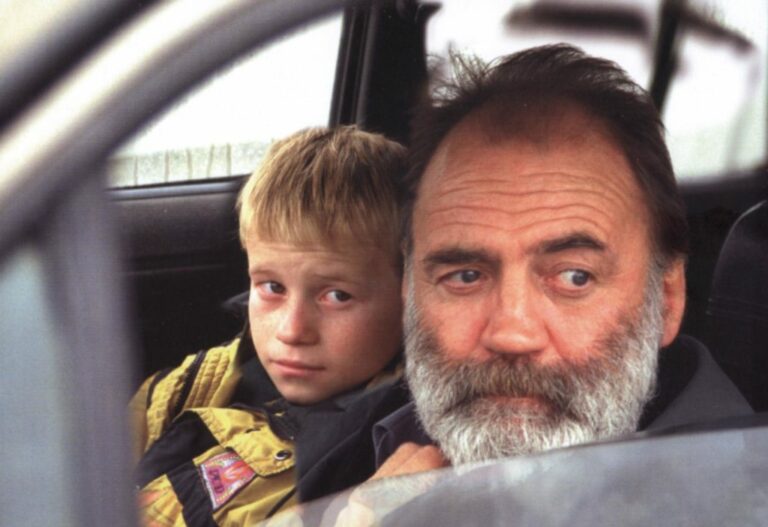
It’s five o’clock. The sweet elderly regulars are waiting to get in to have their coffee and play cards. With a childish amazement the whole micro community of “Diethnes” poses for the camera.
Opening hours: 07:30 am. – 16:00 pm, 17:00 – 20:00 pm. Address: 76 Megalou Alexandrou str, Florina Telephone: 2385023585
*Mekasis, D. (1996). The old professions of Florina. Book A. Florina: Prespes 1993, 126-129.



